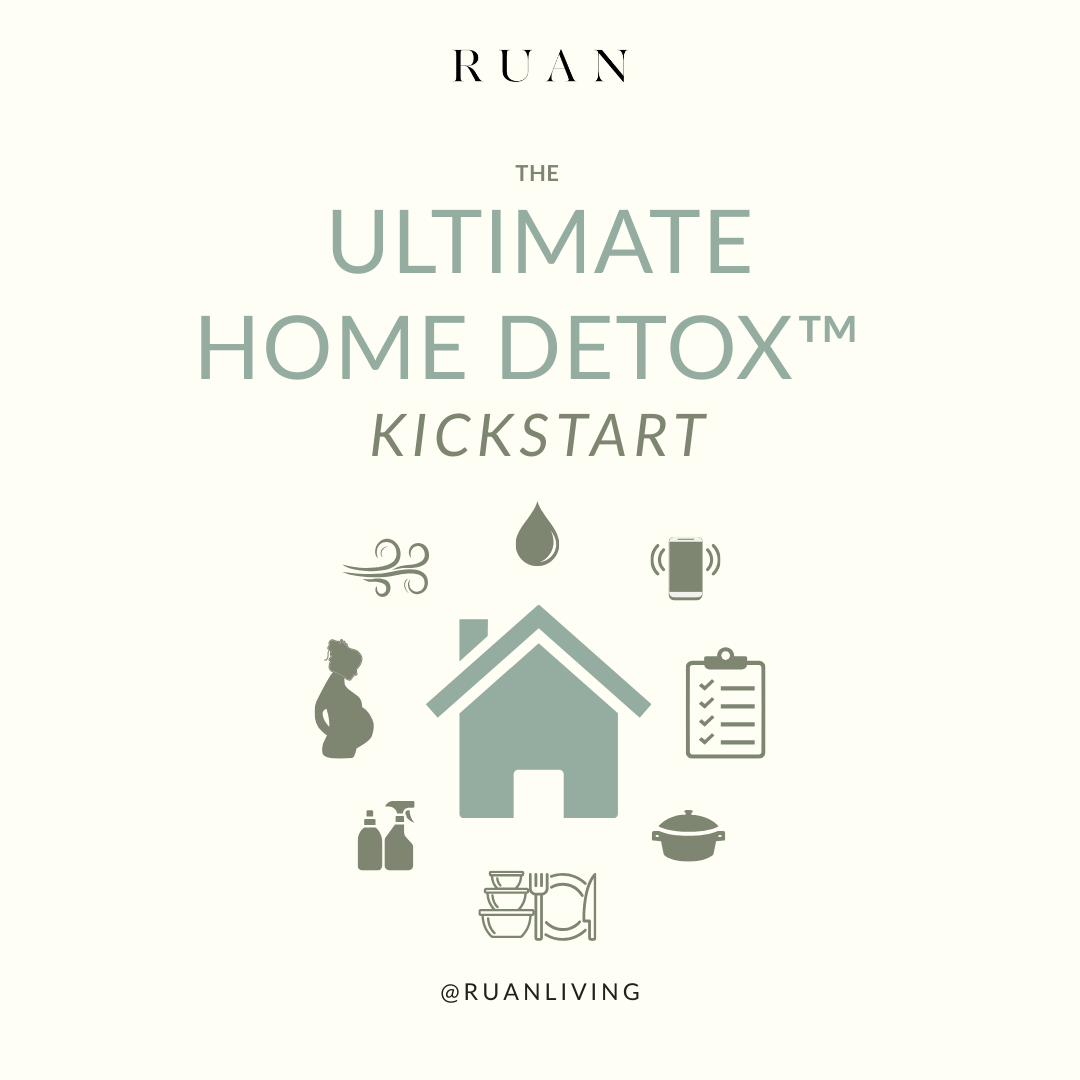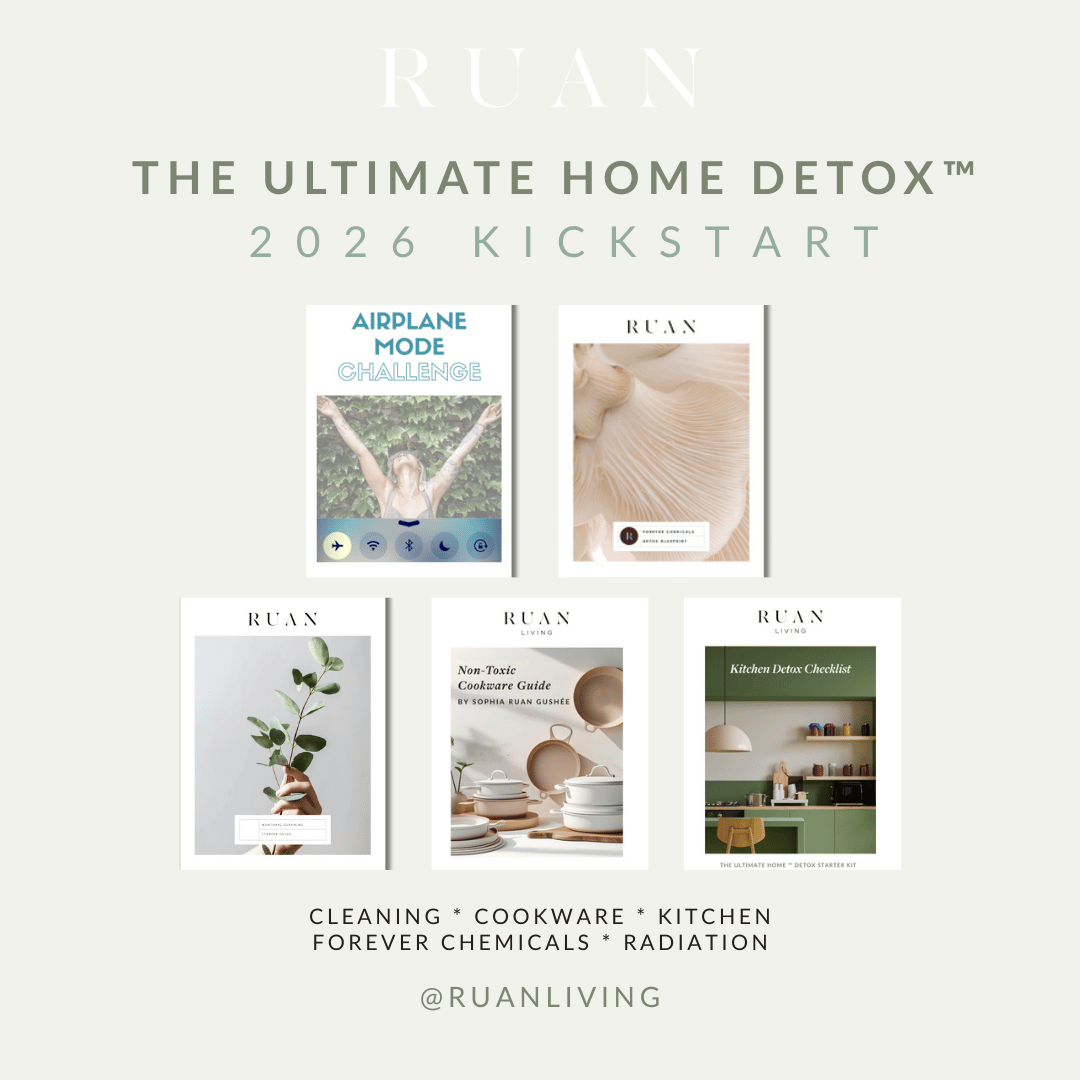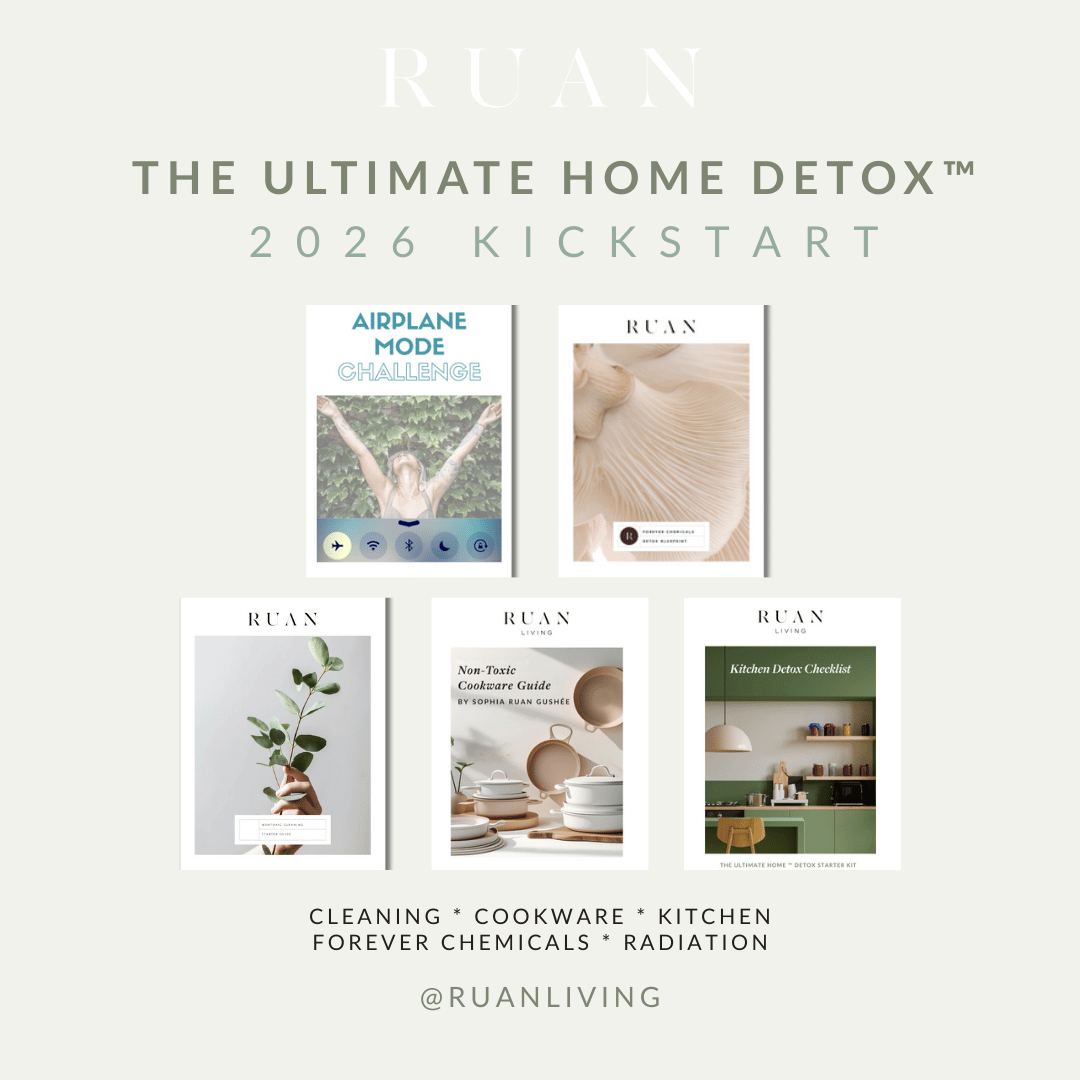
Which Household Items Threaten Mental Health?
Jul 05, 2023by Sophia Ruan Gushée
Inspired by May's mental health awareness campaigns, I became curious about the influence that toxic chemicals, heavy metals, and electromagnetic fields (EMFs) have on mental health. I was surprised at how many studies have pursued this understanding.
This article shares what I learned from reviewing scientific studies that investigated the following questions:
- What’s going on with our mental health?
- What’s the influence of our toxic exposures on mental health?
- What does science know about the influence of toxic exposures on mental health?
- Which neurotoxicants are the worst for our mental health?
- What are simple tips to avoid neurotoxicants?
If you would like to watch my mental health workshop, which discusses the contents of this article, then click here: Which household items threaten mental health? The replay is available for free for a limited time. For the workshop's key ideas, just scroll below.
What is mental health?
The Centers for Disease Control explains that mental health—which includes our emotional, psychological, and social well-being—affects how we think, feel, and act. Important at every stage of life, from childhood and adolescence through adulthood, mental health also influences how we handle stress, relate to others, and make healthy choices.
There are over 200 identified mental illnesses.
What’s going on with our mental health?
In June 2022, the United Nations estimated that 1 billion people worldwide suffer from mental illness. In the United States, it's estimated that 20% of U.S. adults live with a mental illness, which equates to tens of millions of Americans.
What's alarming for parents is that +20% of teenagers (ages 13-18) have had—either currently or at some point during their life—a "seriously debilitating mental illness." Suicide is the 2nd leading cause of death among people aged 10-14, and the 4th leading cause of death among 15-29-year-olds. (WHO)
People with severe mental health conditions are more likely to die as much as two decades early due to preventable physical conditions. (WHO) The White House reported in April 2023 that drug overdose deaths are also near record highs.
Support for mental health should begin as early as possible since 50% of all lifetime mental illness begins by age 14, and 75% by age 24.
Continue reading for more insights on mental health.
Anxiety and depression
- The most prevalent mental illnesses among U.S. adults, according to National Alliance on Mental Illness, are:
- Worldwide:
- Globally, an estimated 5% of adults suffer from depression
- More women are affected by depression than men
- Depression and anxiety disorders cost the global economy $1 trillion in lost productivity each year
- Depression is a leading cause of disability worldwide
Women
- Women are nearly twice as likely to develop mood disorders compared with men
- Incidence is greatest during reproductive transitions, including pregnancy and postpartum.
- Because these periods are characterized by dramatic hormonal and physiologic changes, there is heightened susceptibility to external factors, such as exposure to environmental toxicants, which may play a role in maternal psychopathology.
Postpartum Depression
-
Second-trimester nonpersistent chemical exposure was associated with increased postpartum anxiety and depression symptoms. (2023)
-
Endocrine-disrupting chemicals may influence hormonal shifts during pregnancy as well as contribute to postpartum depression (PPD). (2021)
How is our mental health influenced by our toxic exposures?
While mental health results from many factors, including the interplay of genetic and non-genetic factors, it's helpful to appreciate that the US National Academy of Sciences (Collaborative on Health and the Environment - Washington 2014) estimates that "28% of neurobehavioral disorders could be attributed directly or indirectly to environmental contaminants, not including alcohol, tobacco or drugs of abuse.”
As I reviewed the peer-reviewed articles on which environmental contaminants influence mental health, I wondered how to distill an overwhelming amount of research on this highly complex topic. I chose to focus on a 2022 article, "Neurotoxicants, the Developing Brain, and Mental Health,” which was published in Biological Psychiatry Global Open Science journal. This leads us to neurotoxicants...
What are neurotoxicants?
Neurotoxicants are chemicals or substances—man-made or natural—that interfere with normal function and/or compromise adaptation in the nervous system, either during development or at maturity. There are +200 chemicals reported as neurotoxicants in humans, ranging from metals to air pollution to inorganic compounds.
Neurotoxicants are found in many places including household items.
How can neurotoxicants influence mental health?
While much more research is needed, examples of mental health symptoms that have been associated with neurotoxicants are below.
- Cognitive dysfunction
- Headache
- Memory disturbance
- Other neurological signs and symptoms
- Subtle or overt alteration in thoughts, moods, or behaviors
- Socially undesirable outcomes
When the brain is exposed to neurotoxicants during major stages of development—like prenatally, early childhood, and adolescence—then the neurotoxicants can have more severe, sometimes irreparable, effects by altering the development and functioning of the brain.
Summary
In summary, mental health results from various complex factors. However, there are toxic exposures from household items and our routines that can also contribute. Below are key ideas to remember.
- Detox your home and routines. We should avoid unnecessary toxic chemicals, heavy metals, and EMFs! The next section offers great tips to get started. For more help with swapping toxic household products for safer ones, join the D-Tox Academy. Shopping guides, videos, checklists, regular Ruan Powwows, and more can help you more quickly find practical nontoxic products and approaches that are best for your budget and preferences. To detox your home and perspective as transformatively as possible, join Ruan Living's 40-Day Home Detox.
- Be mindful of unique vulnerabilities. Often, we have unique reactions to the same exposure (including the same dose of exposure). For example, there is evidence that prenatal BPA exposure is associated with more symptoms of anxiety and depression in boys but not in girls at ages 10–12 years. Many studies have proven that the most vulnerable time to be exposed to neurotoxicants is during stages of major brain development: in utero, early childhood, adolescence, and menopause. Low levels of exposure during these key developmental periods can sometimes cause irreparable brain injury. Many endocrine-disrupting chemicals are now known to cross the placenta and enter the fetal bloodstream, where they may pose risks. Unborn children deserve extra protection from toxic chemicals, heavy metals, and toxic electromagnetic fields.
- Certain neurotoxicants (like lead) can cause irreparable harm; others have less dramatic effects
- Minority populations are more adversely affected
- A multi-pronged approach to optimizing mental health can reduce societal costs and improve life quality for many.
Which exposures are the worst for our mental health?
All neurotoxicants are harmful. Below, however, are the important and relatively easy ways you can avoid some of the most common neurotoxicants in homes.
To Avoid Lead
While the US banned lead in paint and gasoline decades ago, it's still found in many household items. Three easy ways to reduce your lead exposure are below. For more help in detoxing lead from your household products, Ruan Living's D-Tox Academy (gradual detox) and 40-Day Home Detox (deep detox dive) can help. To start, please consider the following.
- No shoes in the home. House dust and soil contaminated by remnants of lead paint continue to be the most common and persistent sources of lead exposure in children. Often, the bottom of our shoes track in heavy metals, like lead, and toxic chemicals, like pesticides.
- Wash hands often. Our household items can also contaminate our house dust. So washing hands before eating and drinking is a must!
- Detox your lipstick.
- 61 percent of lipsticks contained lead (Campagin for Safe Cosmetics, 2016).
- In 2012, the Food and Drug Administration tested several hundred lipsticks from 20 popular brands. FDA scientists found lead in every one.
- Lead can contaminate the mineral pigments that color lipsticks—particularly red lipsticks.
Young life must be protected. Lead is especially dangerous for pregnant women and those of childbearing age because it can cross from the mother’s blood into the placenta, causing permanent damage to the developing fetus’ brain.
To Avoid BPA
Inhaled or absorbed, BPA has been found in:
- Reusable bottles, microwave ovenware, food storage containers, the internal coatings of food and beverage cans, and children’s toys.
- Polyester-based clothing with spandex. When buying socks avoid ones made from polyester with spandex.
- Look for socks made with mostly cotton, wool, or other natural fibers.
- Remove your activewear and socks after your workout.
- Receipts. D-Tox Academy workshop on this. It’s also a Practical Nontoxic Living podcast.
To Avoid Phthalates
Phthalates are used in pharmaceuticals, cosmetics, personal care products, and packaging.
- Declutter.
- Buy less.
- Buy mindfully. Ruan Living simplifies the complex goal of nontoxic living.
To Avoid PCBs
Banned in many countries, including the United States in the 1970s, PCBs are still persistent and ubiquitous environmental contaminants. They were popular for multiple industrial uses in the early 1930s, including as capacitor and transformer oils, hydraulic fluids, lubricating oils, and plasticizers.
- Food accounts for over 90% of our PCB exposure, the highest concentrations being found in fish (such as salmon and shellfish), dairy products (especially milk and butter), and animal fat
To Avoid Air Pollution
Detox your home’s indoor air quality! Many studies have associated poor air quality with mental health symptoms as well as other adverse health effects. But, most people don't realize that indoor air tends to be at least 2-5 times more polluted than outdoor air, even in the most industrialized cities! The simple tips below can help you detox your indoor air.
- Allow fresh air exchange when outdoor air quality is better than indoor air quality
- Use ventilation when cooking
- Consider an air purifier, especially in your bedroom. Use code SOPHIA102024 for 10% off our favorite, Intellipure
- Detox your household products. Ruan Living’s D-Tox Academy (gradual detox) or 40-Day Home Detox (deep detox dive) can guide you.
A less toxic lifestyle is waiting for you
Again, to watch this mental health workshop, which discusses the contents of this article, then click here: Which household items threaten mental health? The replay is available for free for a limited time.
When you are ready to turbo-boost your detox of household products and routines of toxic chemicals, heavy metals, and EMFs, then join the D-Tox Academy for help in gradual products swaps or join Ruan Living's 40-Day Home Detox to detox your Homes more dramatically.
—
About Sophia Ruan Gushée
Sophia Ruan Gushée is a nontoxic lifestyle expert and founder of Ruan Living, a wellness platform that empowers others to improve their health by mindfully reducing their exposure to hidden toxins in their everyday lives. Sophia is the author of A to Z of D-Toxing: The Ultimate Guide to Reducing Your Toxic Exposures and several detox workbooks. A graduate of Brown University and Columbia Business School, Sophia lives in New York City with her husband and three daughters. Her passion for empowering others to enjoy nontoxic living began with the birth of her first daughter in 2007. Everything she creates is a love letter to her children and the hope for a healthier, more mindful world.
Select Sources
Below are select sources.
- About Mental Health. (n.d.). https://www.cdc.gov/mentalhealth/learn/index.htm
- A to Z of D-Toxing: The Ultimate Guide to Reducing Our Toxic Exposures (2015). Sophia Ruan Gushee. https://www.ruanliving.com/best-book-to-detox-your-home
- Cardenas-Iniguez, C., Burnor, E., & Herting, M. M. (2022). Neurotoxicants, the developing brain, and mental health. Biological Psychiatry Global Open Science, 2(3), 223–232. https://doi.org/10.1016/j.bpsgos.2022.05.002
- Carnevale, S. (2023). What You Need to Know About BPA in Clothing. Center for Environmental Health. https://ceh.org/what-you-need-to-know-about-bpa-in-clothing/
- Harvard Health. (2022, January 10). What causes depression? https://www.health.harvard.edu/mind-and-mood/what-causes-depression
- Mental Health By the Numbers | NAMI: National Alliance on Mental Illness. (n.d.). https://www.nami.org/mhstats
- Nearly one billion people have a mental disorder: WHO. (2022, June 21). UN News. https://news.un.org/en/story/2022/06/1120682
- Perera, F. P., Nolte, E. L. R., Wang, Y. X., Margolis, A., Calafat, A. M., Wang, S., Garcia, W. E., Hoepner, L., Peterson, B. S., Rauh, V., & Herbstman, J. B. (2016). Bisphenol A exposure and symptoms of anxiety and depression among inner city children at 10–12 years of age. Environmental Research, 151, 195–202. https://doi.org/10.1016/j.envres.2016.07.028
- World Health Organization: WHO & World Health Organization: WHO. (2023). Depressive disorder (depression). www.who.int. https://www.who.int/news-room/fact-sheets/detail/depression




